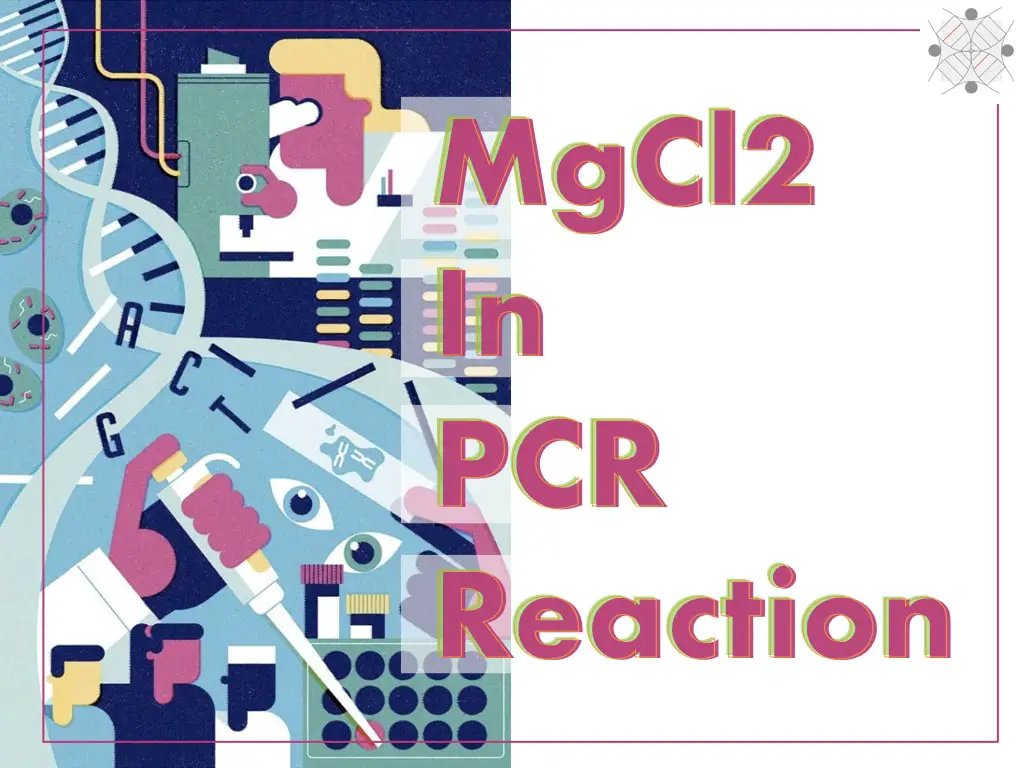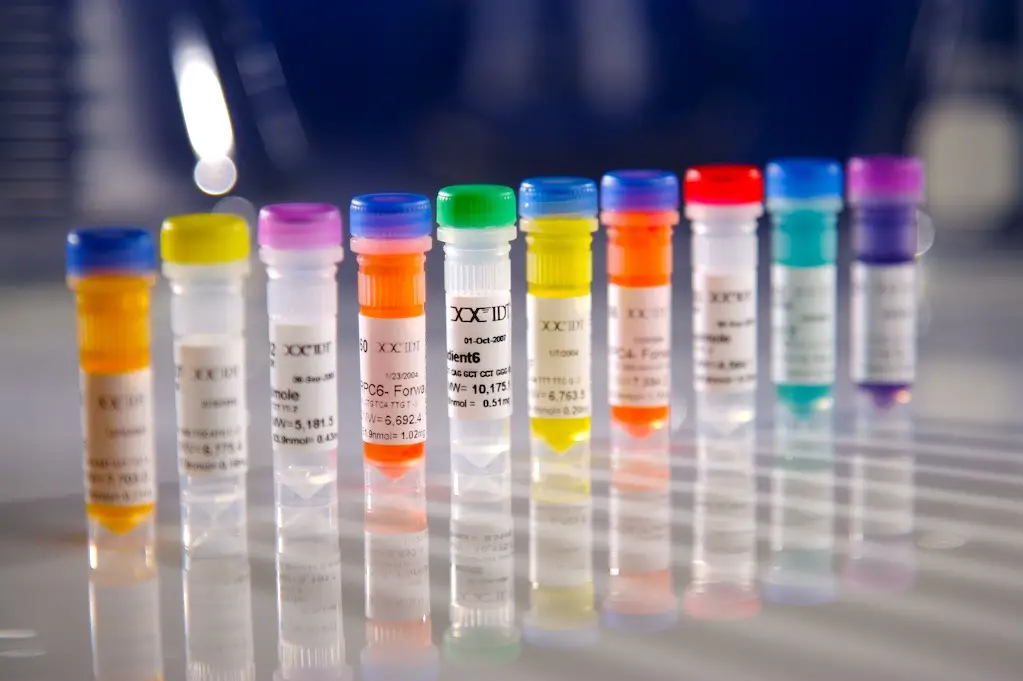“In a gradient PCR, we can create temperature variation for the annealing step, set different annealing temperatures and test different parameters at different temperatures.”
PCR is an amazing discovery in the field of genetics. Nearly, no experiment can be completed without using the PCR. Thus, it’s become crucial to learn every possible aspect of PCR. Our previous article is all about PCR and its basics, read it here: Polymerase Chain reaction.
PCR copies the target DNA in a cycling process which includes steps like denaturation, annealing and extension. Ingredients like dNTPs, primers, PCR buffer, Taq DNA polymerase, template DNA and water are used to prepare a PCR reaction.
In addition, chemicals like MgCl2 or DMSO are employed to optimize the efficiency of amplification. The annealing temperature is also yet another crucial factor to get good amplicons in the reaction.
So, collectively factors like the concentration of PCR buffer, MgCl2, DMSO, even primers or Taq DNA polymerase, and annealing temperature are critical parameters to achieve success in any PCR reaction.
We need to optimize each parameter as per the requirement of the experiment or template. However, testing each parameter one by one is a time-consuming and constant process.
Imagine what will you do if you have to run various PCR reactions for each annealing temperature, for let’s say 57ºC, 58ºC, 59ºC or 60ºC and to test the optimal concentration of MgCl2 (1.5mM, 2mM and 2.5mM).
It’s practically not possible right? So what scientists can do?
They use a gradient PCR to optimize each parameter possibly in a single reaction. In this article, we will learn about the concept of gradient PCR, its principle and its limitations. I will also give you an example of how you can set a gradient PCR reaction.
Stay tuned.
Key Topics:
What is gradient PCR?
Gradient simply means “something is increasing or decreasing.” So when we are using the term gradient PCR it means we can increase or decrease the temperature in a single machine.
The annealing temperature is a crucial part of the PCR reaction; too high and too low annealing temperature may result in reaction failure and non-specific amplification. So to achieve excellent amplification, an optimal annealing temperature is required.
The ideal range of the annealing temperature is between 57ºC to 65ºC. For example, some template DNA can amplify at 59ºC, and some can at 61.5ºC or at 65ºC annealing temperature. It varies from template to template and protocol to protocol.
In a gradient PCR, we can set different temperature gradients in a pair of columns. So that different annealing temperatures can be tested for a given experiment.
The machine is a bit different compared to the conventional PCR machine, as it contains separate heating blocks for different pairs of columns. However, the rest of the parts like the display, lid, power butter and USB port remain the same.
The conventional PCR contains only a single heating block which distributes a single temperature in all the wells. Whereas the gradient PCR has different temperature zones in different column pairs.
Principle of Gradient PCR:
In principle, gradient PCR can test multiple annealing temperatures as well as other parameters in a single run. It can create temperature differences in different columns, allowing us to quickly identify the best combination of temperature and parameters for the reaction.
How to use gradient PCR?
A typical ABI gradient PCR has 12 columns and 8 rows. So in a six-pairs of columns, we can set different temperature gradients between >0.5ºC to <5ºC. Meaning, we can set as low as 0.5ºC or as high as 5ºC between two adjacent column pairs.
Let’s take an example.
Suppose we have an annealing temperature for our template DNA is 58ºC. We have obtained it using the Primer 3 software. Now we have to test it, whether it’s good or not.
Now to set it, we will select the temperature. 57ºC, 58ºC, 59ºC, 60ºC, 60.5ºC and 61ºC. Set it in the protocol like this,
Let’s say we have run the PCR protocol for 3 hours. Now we have to analyze the results. We will load each sample in 6 different gel wells.
The reaction at 57ºC has a very thick band and some non-specific amplification. Another reaction at 58ºC also has a non-specific product. At temperatures of 60.5ºC and 61ºC, we get fever amplification. The reaction at 60ºC has the best amplification band.
So theoretically, Primer 3 has given us the annealing temperature of 58ºC but we get amazing results at 60ºC. That’s our best temperature for the experiment. That is what a gradient PCR can do.
Now let’s check another parameter– the concentration of MgCl2 in the PCR reaction.
MgCl2 is a crucial component of the PCR reaction as it provides the Magnesium ion that works as a cofactor for the Taq DNA polymerase enzyme. Adding higher and very lower concentrations of MgCl2 can increase the chances of non-specific amplification and reaction failure, respectively.
Now it’s also crucial to check which concentration of MgCl2 goes with which annealing temperature. Let’s say we have added 4mM MgCl2 in the reaction and run it at a different temperature, the same as set above.
The hypothetical representation and results are shown here.
Again, when we add 4mM MgCl2 to different tubes, the best amplification is obtained at 60ºC temperature. We can test other parameters like the concentration of DMSO, Taq DNA polymerase or even primers against different annealing temperature gradients.
Advantages of Gradient PCR:
- Time is everything in a molecular genetic lab, as this step or procedure takes so much time. Gradient PCR is a time-saving option. We do not have to run separate reactions for different temperatures and parameters.
- It allows multiplexing many reactions in a single run. If we have 5 different experiments and we want to run them in a single reaction, we can set respective annealing temperatures and run each experiment in a single PCR run.
- It greatly reduces the chances of false results and increases the chances of success rate by systematically testing different possible annealing temperatures for the experiment.
- It requires fewer reagents, chemicals and other uses.
Limitations of Gradient PCR:
One crucial limitation of gradient PCR is the limited gradient range. We can not set the gradient temperature above or below the range of the machine. For example, if the machine has a >5ºC range, we can’t set a temperature difference more than that.
Glims of instruments:
ABI Veriti 96-well Thermal cycler:
ABI Veriti 96-well Thermal cycler is a basic PCR machine that comes with a temperature gradient in a single machine. We can set the lowest up to 0.5ºC and the highest up to 5ºC temperature between adjacent gradients.
Pro-Flex PCR:
Pro-Flex PCR is also a product of ABI (Applied Biosystem, a registered trademark of ThermoFisher) but is different from the Veriti 96-well. We can say it’s a combination of three different machines in a single instrument. We can set up three different gradient experiments at any time using a single machine.
Related articles:
- What is Touchdown (TD)-PCR?
- Multiplex PCR- Principle, Process, Protocol, Advantages, Limitations and Applications.
- Emulsion PCR: Principle, Process, Advantages, Applications and Limitations.
Wrapping up:
Gradient PCR is an excellent advancement of conventional PCR. we can run different protocols in a single machine and that, as aforesaid, saves time. It’s an amazing tool for optimizing the annealing temperature and other parameters for a PCR.
I hope you like this article. Please bookmark the page and read other articles as well.
FAQs:
Sources:
Padmakumar, V. C., & Varadarajan, R. (2003). A gradient PCR-based screen for use in site-directed mutagenesis. Analytical Biochemistry, 314(2), 310–315.
Using Gradient PCR to Determine the Optimum Annealing Temperature. By By Vincent R. Prezioso and Axel Jahns, Eppendorf Scientific Inc.

